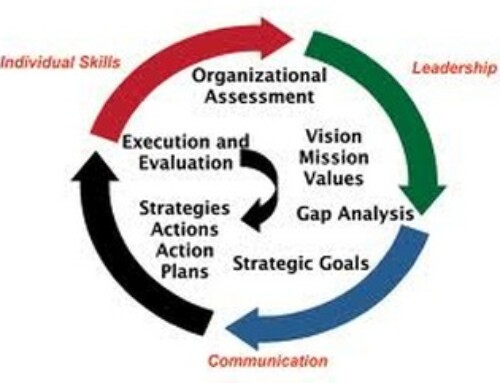Attending the recent Real Estate Connect conference in NY City I heard a lot of very bright individuals speak about the future of MLS. There were some great opinions and observations a few semi- heated debates but more than anything, what really stood out for me, was how disjointed and dysfunctional our industry is in some regards. The other thing that struck me was how well our industry and in particular, MLSs, work in spite of that fact.
Think of the different tracks we see being taken by influential, bright movers and shakers in our industry and tell me if you agree with any of my observations.
- NAR is driving forward with their plans for a national property database, currently called the Realtors Property Resource. They say the intent it not to create a national MLS but let’s get real, if it walks like a duck…If this project really comes together it will be hard for it not to take on some or all aspects of a national MLS at some point in the future. I’m not making a judgment on whether this is a good or bad thing at this point but there is no way it is not going to impact every MLS in the country if it comes about.
- Large regional consolidation is taking place on a regular basis around the country. This is not being done in conjunction with a national master plan. It is being done based on real, immediate needs of local markets. Open minded MLS leaders are breaking down walls and coming together on common platforms in many places where the natural selling areas have been redefined over the years. Where the boundaries really have changed these MLS regionals are a “natural” evolution.
- On another front data warehousing/sharing efforts are taking place in several areas in the country where multiple MLSs, on the same or different vendors, are using a separate technology like the MRIS CURE product, to create a common data platform that allows for seamless data sharing. All of the shared data can be pushed back to each respective MLS system or ultimately the underlying system, be it CURE or some other solution, where it can be accessed directly. This movement is also taking place as a result of real and immediate local market needs and is being driven by the executive leadership of these MLSs.
- At some state levels, we see various initiatives underway, such as the push for statewide regionalization by CAR. CAR is moving forward with a statewide regionalization project in spite of the local and regional efforts already underway by CAR members throughout the state. There is no question there is a need for broader data access in California and that longterm there is a need to continue consolidation but is this the right approach? Listening to panel members of both CAR and California MLSs during the Inman Conference the phrase that stuck with me was, and I paraphrase, “it looks like a solution looking for a problem!”
Now maybe it’s just me, but no matter how I look at it, I can’t understand why we have so many multiple projects trying to accomplish the same thing, when ultimately we are all on the same team. When you stop and realize that there are very serious interests out there, not associated with organized real estate that would like to do nothing more than waltz in when we fall down it simply amplifies the whole issue. At the recent Inman conference David Charron , CEO of MRIS, made the following observation, which I think is right on:
…Charron said that he is concerned that too much energy is expended on infighting among Realtor groups and vendors on MLS issues these days, and there is a risk that the industry is “taking our eye off the ball of what really needs to be done.”
Using the example of politics over the CALMLS effort, Charron said that fear of losing local control may cause some groups to “hunker down as opposed to reach out and embrace” the effort. “They’re worried about unintended consequences associated with abandoning one and moving into another (MLS).”
David hits the nail on the head, but I think the bigger issue is WHO SHOULD LEAD?
Each one on its own has merits and you can certainly shout pros and cons for each. I also truly believe that in every case the people behind these initiatives are well intentioned. What I don’t believe is that in every case these initiatives have been well thought out.
David Charron also added during the same conference:
“Let’s be careful we don’t impose the dysfunction we see in other markets on the entirety of the market, because some markets are moving together real well, and real nicely, real painlessly. Others are coming along, but all of the sudden we see a challenge or problem … let’s just make sure we don’t make that (mistake) everywhere.”
So whether you agree with a state or national database or regionalization at that level I think we have to make sure the cure doesn’t cause more problems than the OMD (overlapping market disorder) disease!
On the same panel with David Charron was Scott Kucirek who is heading up the state regionalization effort for CAR in California. Scott made the following observation during the panel:
“From my brief time talking to each player, what you see is everyone in California does want the statewide (MLS). They just each have their own vision of what’s that going to be, and how it’s set up on the ownership side or who’s in control of it,” he said.
“So it’s a little about power and politics (in California), and unfortunately in those conversations what gets left out is what’s right for the members. Everyone says they really are trying to do what’s really right for the members, (but) when you really look at it in many cases that’s not the intent. The politics is the issue.”
I couldn’t agree more with Scott! There is a problem and everyone has their own vision of what it is and how it should be solved. The question, as it always seems to be in our industry, is who should lead the way to finding intelligent and properly scaled solutions so we don’t have multiple solutions underway trying to solve the same problem.
What are the real benefits and what is the real cost?
Scott touched on several issues including the fact that in 10 years or so we probably won’t have these issues. It will be more a question of whether we have 25 or 50 regionals or one big national regional, which I agree will happen….when it makes real market sense. What I don’t know is how soon we really need to do it to address true market issues versus political vision. Will it happen? Absolutely! Is it needed right now? I really don’t think so.
Let’s start with the idea of a state or national database. When I hear people say that a state or national data base is going to save members money and create all of these great benefits for members I really don’t see it. Let’s look at from a business perspective for a few minutes and see if it all adds up.
Eight hundred plus MLSs around the country currently have technology solutions in place to address the needs of their local market. In the areas where boundaries have changed these “local” markets are adjusting and making informed decisions to regionalize or share data to address these issues. While this is going on separate projects are launched and crusaded to take the problem out of the local market hands to provide a “better” solution, be it statewide or nationally. Does this make sense and does it provide real benefits? Certainly there would be some data sharing benefits for real estate companies that cross multiple MLS lines but these problems can be solved in numerous ways short of a statewide or national system and in most cases are being addressed at the regional level.
Is it going to save members a lot of money? That is hard to imagine. In an industry where MLS member technology prices have been pushed to ridiculously low levels how much will really be saved on that end? Certainly very small MLSs have built in inefficiencies and over time most will join larger neighbors to deal with these inefficiencies but the technology costs even for small MLSs are simply not that high.
Individuals associated with these national and state projects tell us that they don’t intend to take over the local MLS, or force change on member MLSs but they also clearly don’t have the full support of the local MLSs or there wouldn’t be all of these separate projects moving in multiple directions at the same time. You don’t have to be a very good business person to see that money is being wasted, member money, Realtor money, by having all of these separate projects in place trying to ultimately solve the same real or perceived problems.
So, plain and simple, I would ask whether having different groups within the same industry, who supposedly are all on the same team lead different projects to solve the same issues is a good business approach!
Now let’s look at this from another perspective, the value that the state, multi-state or national database will bring to the real estate community regardless of how it is put together. How real are the benefits? Will Bob and Sue Realtor in New England really receive value from being able to access that Lake Tahoe MLS listing? Consumers already have access to it so it doesn’t solve that problem. Will Broker/agent John down in Houston really benefit from those Buffalo, NY listings? There will certainly be value to the large real estate companies that want to draw data from multiple MLS areas because they cross these lines but isn’t that being addressed already at the local and regional level at least in large part? Somehow it reminds me of Transaction Management in 2005 when WAV Group published the Transaction Management Adoption study. The industry consensus was that Transaction Management was a “must have”, it was cool, and the industry was ready. Many consultants were shouting Transaction Management from the roof tops saying how it was the next great event in our industry and how everyone needed to get on board. We looked at it at WAV Group and asked, “What is the real PAIN it is going to solve?” We asked this because it has been our experience that unless there is a real and immediate pain change rarely takes place on an industry wide scale. Using the example of Transaction Management this technology didn’t shorten the sales cycle, the closing cycle, didn’t save an agent money, didn’t make the agent money, required additional training and a significant administrative commitment on the broker or agent part. But, if you asked the industry is this a good thing to do, everyone agreed yes., The reality was there was not enough value to adopt it industry wide so it just didn’t go anywhere fast. At the time, we recommended that these companies focus on forms and document management as the “low hanging fruit” to introduce these tools to the industry. Today that is just what is taking place and finally we are seeing some traction in that area.
So when we look at the whole issue of data, regionalization and need let’s ask where the real PAIN is and are the benefits significant enough to make these initiatives worthwhile? Without those two factors I believe most of these efforts are wasted energy.
Who should be in control?
What about the unavoidable bureaucracy and politics that has to come along with a database or super MLS that is going to serve the state, or country and loss of local control this has to cause? Is the ability to access data across the country worth the loss of local market control? Can you have both? Will the entity that must be created to run any mega system be more effective in addressing all local market needs than local regionals based on natural and “real” markets? Isn’t real estate still a local business?
Even if the industry wants a “national” solution is NAR or a state association the right group to lead these charges or should it be run by regional business leaders as the local regionalization efforts are? Who is more likely to drive it successfully based on solid business principles instead of politics and personal agenda. What the industry doesn’t need is more politics and how can it be anything but in the direction it is currently moving in?
Will this drive innovation or stifle it?
The next question relates to technology and innovation. Our vendor market is incredibly dynamic at all levels from the MLS to the broker and agent and we see innovation at every conference we attend. Will a national solution impact this innovation? What is the risk of relying on one national database if it comes to that? Or, will this create a whole new level of innovation by vendors feeding off of this new national database? I tend to believe that innovation will adapt to any reality but I also believe that when you take away competition you ultimately reduce the overall quality of any initiative.
What will be the true impact of these initiatives?
The truth is, we don’t know! Has a true impact study been done in any of the situations mentioned? Has NAR or regional MLSs or state associations really spent the time to project 3, 5 or 10 years down the road to project in any detail how they see events unfolding in terms of both the positive and negative impacts on these industry initiatives? How will local MLSs be affected? What are the real benefits that will materialize? What will member costs be? What will be the impact on their technology vendors and the agreements they currently have in place? What will the cost of re-educating the members be with any change? Will the value received outweigh these costs? Will these initiatives, if they fail, open the door for the 3rd party vendors and further reduce RealtorÒ credibility in consumer’s eyes. What about the regional efforts taking place? Is this all wasted money? What is the real cost to members today as a result of multiple parallel efforts trying to address the same issue?
I think these are valid questions that should be addressed and answered as well as possible prior to moving forward outside of the local market initiatives. We think this is especially true when the real and immediate PAINS are being addressed quite well at the regional MLS level.
Conclusions
In a perfect world and a perfect industry the leaders we see speak at our conferences, running our associations, MLSs and real estate companies, would find a way to talk before they walk! Personal egos and agendas would be put aside in the interest of the members and also the consumers. There would be serious study and discussion at the national, state and local levels to find a common strategy that would let the local markets address their immediate needs while finding agreement on a the larger strategy. Or, if there was not agreement on a larger strategy maybe the smart thing to do is to wait until there is. Yes what we see to often it a “ready, fire, aim” strategy!
In that perfect world there is no way that local, regional, state and national projects would occur simultaneously addressing the same issues without those efforts being a part of a master plan that the individual groups agreed on. So local and regional efforts could occur at the same time as a state or national project but it would be done in a way that optimized resources and minimized cost. It would be done with a clear vision of what the impact of the overall process would have initially and long term on all of the participating parties. This vision of course would not be “crystal” clear or absolute, it never can be, but it certainly would be a lot clearer than any vision that has been shared today about how all of these separate initiatives will ultimately come together.
Imagine the panel you might see if this actually happened! Instead of members of our national, state and local MLS leadership sounding like competitors each justifying their individual approach they would instead present a shared vision of the industry as well as the plans they have worked on together to address this vision. The vision might be different and there might still need to be more discussion before moving forward on some grand plan that does not have agreement. But this is a good thing because in the meantime, MLSs will continue to consolidate addressing real and immediate needs. Vendors will compete providing more and better technology solutions. Members will be involved to help determine what is really needed on a national or larger regional level. Money will be saved because there are not multiple efforts going on to solve problems that may not even exist! MLSs will do true strategic planning looking at the real pros and cons of these initiatives rather than just being bowled over by them. Choices will be informed and support of industry wide plans will have true majority backing if they take place!
At the beginning of the piece, I noted how dysfunctional our industry is but also how in spite of this it amazing how well it still works, particularly at the level of the MLS. I truly believe this is because the leaders we have in place in our MLSs today, especially the larger MLSs, are true business people looking for solid business solutions. As a result, they address their market and members based on real business issues with real costs and impacts attached to their actions. If I had to bet on a horse in this race I would put my money on these business leaders to be the ones to find the best solutions. In a perfect world and a perfect industry, I would cancel the race!




